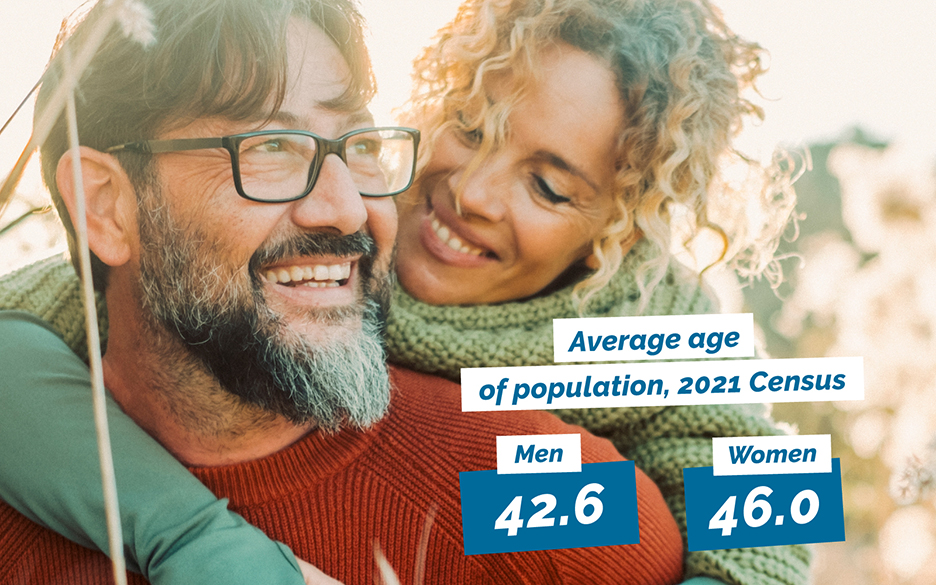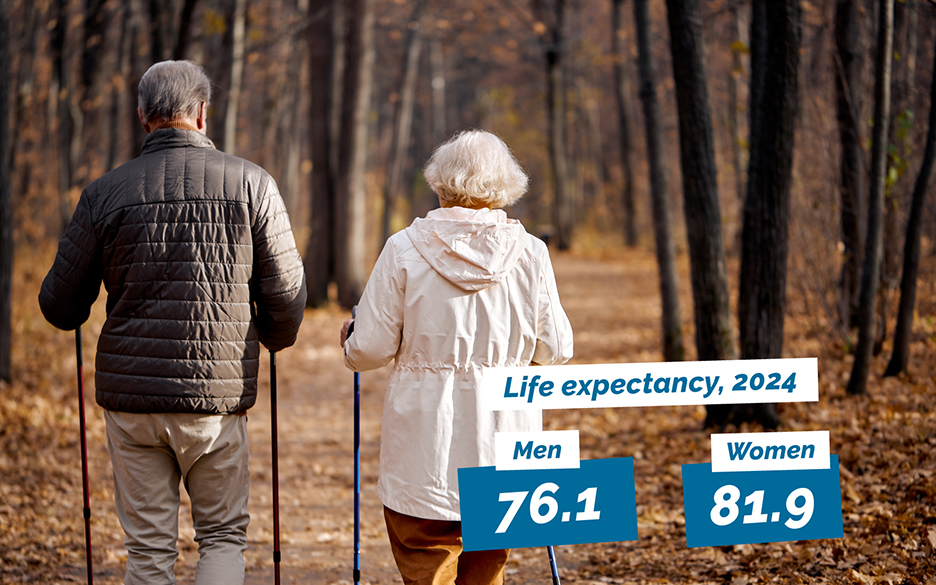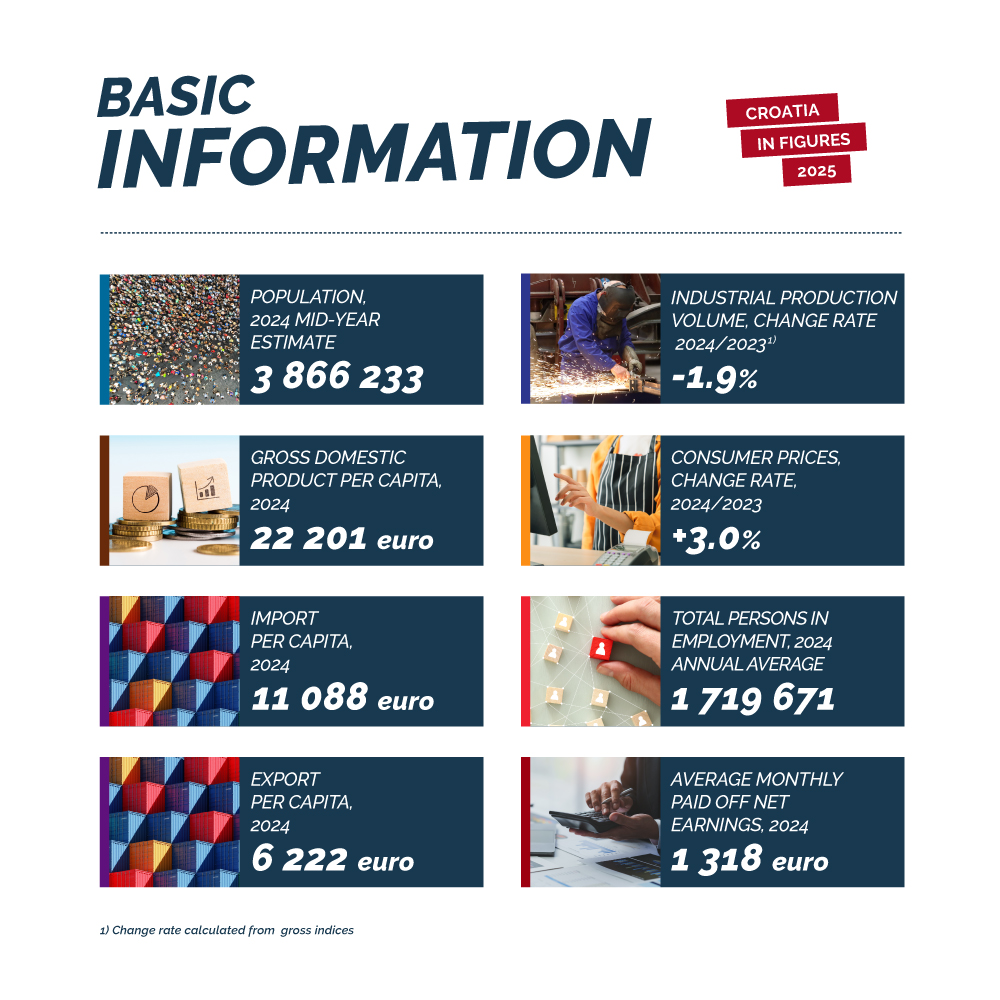| * |
corrected data |
| - |
no occurrence |
| ... |
data not available |
| . |
not zero, but not published due to the extremely inaccurate estimation |
| p |
less accurate estimation |
| ( ) |
less accurate data |
| bn |
billion |
| CEFTA |
Central European Free Trade Agreement |
| CHP |
combined heat and power generation |
| COVID-19 |
COrona VIrus Disease -19 |
| DWT |
deadweight tonne |
| ECOICOP |
Classification of Individual Consumption according to Purpose |
| EU |
European Union |
| EUR |
euro |
| GDP |
gross domestic product |
| GT |
gross tonnage (gross registered tonnage) |
| GWh |
gigawatt hour |
| ha |
hectare |
| kg |
kilogram |
| km |
kilometre |
| km2 |
square kilometre |
| kW |
kilowatt |
m2 |
square metre |
| m3 |
cubic metre |
| MIGs 2009 |
Main Industrial Groupings 2009 |
| mln |
million |
| NIP |
Nomenclature of Industrial Products |
| NKD 2007 |
National Classification of Activities, 2007 version |
| NN |
Narodne novine, official gazette of the Republic of Croatia |
| NPISH |
non-profit institutions serving households |
| t |
tonne |
| '000 |
thousand |
| VAT |
value added tax |
Published by the Croatian Bureau of Statistics, Zagreb, Ilica 3, P. O. B. 80
Phone: (+385 1) 48 06 111
Web site: dzs.gov.hr
Press corner: press@dzs.hr
Persons responsible:
Andrea Galić Nagyszombaty, Director of Statistical Methodologies, Quality and Customer Relations Directorate
Mario Vlajčević, Director of Demographic and Social Statistics Directorate
Suzana Šamec, Director of Macroeconomic Statistics Directorate
Edita Omerzo, Director of Spatial Statistics Directorate
Milenka Primorac Čačić, Director of Business Statistics Directorate
Lidija Brković, Director General
Prepared by: Kristijan Jurić, Maja Marković, Ana Samaržija and Krunoslav Stažić
Editor: Ljiljana Ostroški
Technical Editor: Ankica Bajzek Cesar
Language Editor: Maja Gregorić
Translator: Neda Batinić
Graphic Design: Sanja Huseinagić and Nino Mrša
ISSN 3044-1692
USERS ARE KINDLY REQUESTED TO STATE THE SOURCE WHEN USING THE DATA
Annual demographic statistics are crucial for the study and definition of a wide range of policies, and especially for the implementation of social and economic measures at the national and regional level. They are necessary for the creation of a series of indicators, serve as an important basis for creating macroeconomic policies by those carrying out social and economic activities as well as form a fundamental determinant of current and future social, economic and demographic development.
According to population censuses, in the period from 1971 to 2021, the number of inhabitants was increasing until 1991. The data from the following three censuses show a decrease in the number of inhabitants, with 2021 recording the lowest number, amounting to 3 871 833. The same applies to the number of families. The lowest number of families (1 104 395) was recorded in the 2021 Census. Comparing the structure of households in censuses from 1971 to 2021, a constant decrease in household size (average number of household members) can be observed; for example, in 1971 an average of 3.4 persons lived in one household, while in 2021 this figure amounted to 2.7.
Census data show a continuous aging of the population. According to the 1971 Census, the average age of the total population was 34.0 years (for men 32.4 years and for women 35.5 years), while according to the 2021 Census, the average age of the total population was 44.3 years (for men 42.6 years and for women 46.0 years), which puts the population of Croatia among the oldest nations in Europe.
It is important to mention that the data from the 2011 Census and the 2021 Census are not directly comparable with the data from earlier censuses.

According to the 2024 mid-year population estimate, the Republic of Croatia had 3 866 233 inhabitants, which was an increase in the number of inhabitants for the second year in a row. Compared to the estimate from the previous year, this number increased by 6 547 persons, or 0.2%.
The share of women in the total population of the Republic of Croatia was 51.3%, while the share of men was 48.7%. The share of youth (0 – 19 years of age) in the total population of the Republic of Croatia amounted to 19.0%, while the share of the population aged 65 and over reached 23.2%. The share of the fertile contingent (15 – 49 years) in the total female population amounted to 39.8% in 2024.
Life expectancy at birth in 2024 increased compared to previous years and it reached 79.0 years. The data for 2024 show that life expectancy at birth was 81.9 years for women and 76.1 years for men, which is a difference of 5.8 years.

In 2024, as compared to the previous year, a decrease of 0.3% was recorded in the number of live births, that is, 101 fewer children were born than in 2023. Out of the total of 32 204 births in 2024, there were 32 069 live births and 135 stillbirths.
The number of deaths in 2024 decreased compared to the previous year, with 195 fewer deaths, a decrease of 0.4%. The total number of deaths in 2024 was 51 080.
The natural increase rate in the Republic of Croatia in 2024 was negative, amounting to -4.9 (-19 011 persons).
There were 17 206 marriages in 2024, which was 100 fewer marriages compared to 2023, or a decrease of 0.6%. At the same time, there were 4 961 final court decisions related to divorces, which was 554 more divorces compared to 2023, or an increase of 12.6%.
In 2024, 70 391 persons immigrated to the Republic of Croatia, which was an increase in the number of immigrants of 1.4% compared to the previous year. The number of emigrants decreased in 2024 by 0.6% compared to the previous year, i.e. 38 997 persons emigrated abroad.

The Republic of Croatia had a positive net migration with foreign countries, which amounted to 31 394.
← Previous Next →
 Hrvatski
Download data
Hrvatski
Download data




